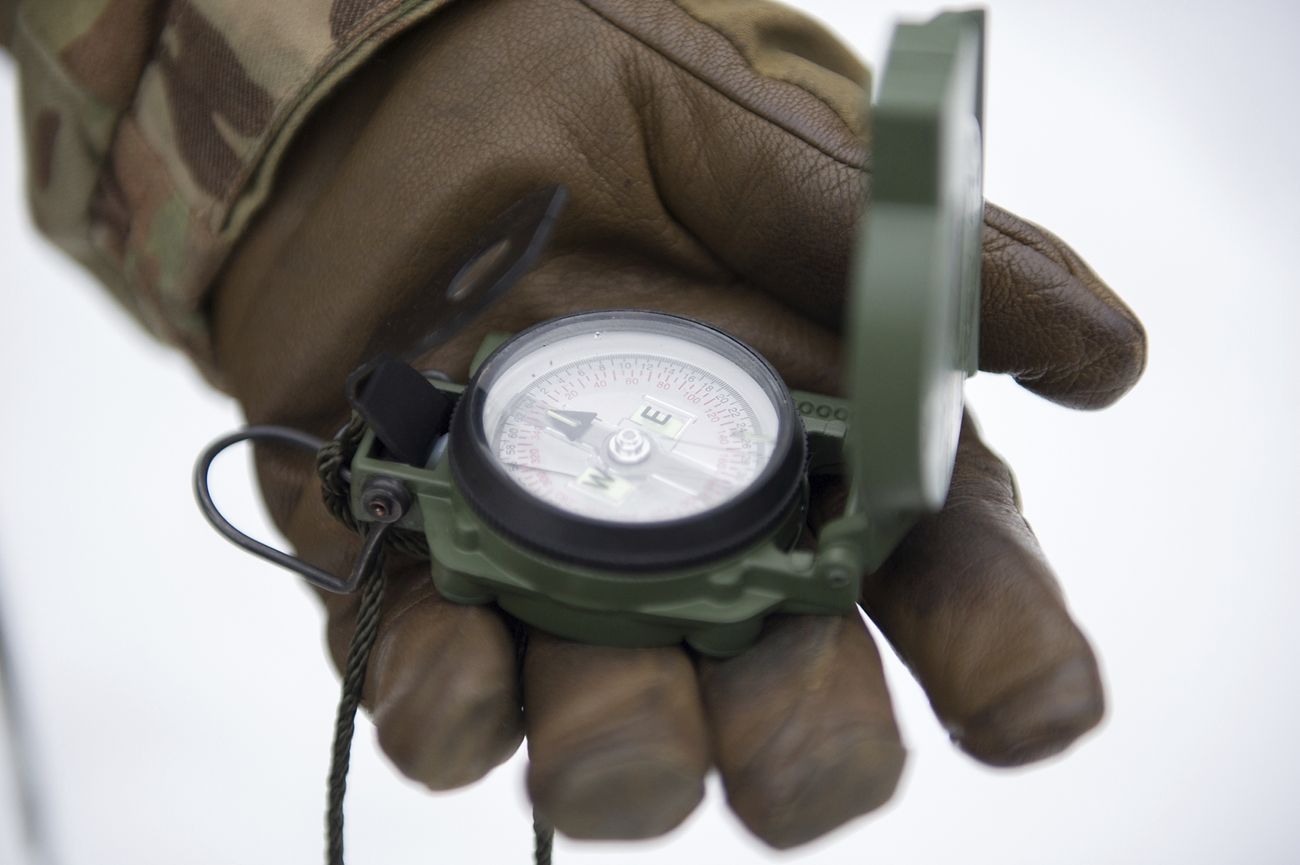Guest post via an author writing under the pseudonym Lost CAC
The military faces a recruiting shortfall. The Army, as the largest service, predictably felt the sting acutely, missing its recruiting goals by 15,000 or 25%. Army officials offered several reasons for recruiting difficulties: a tight civilian job market, pandemic-related restrictions on recruiter access to schools, declining recruits fitness levels, etc. But another factor is in play: America’s culture wars in which the military is increasingly a target. While this is likely a relatively minor cause of recruiting woes, it has the potential to greatly impact the military in budgetary terms and institutional standing among Americans.
Right-wing media outlets routinely call the military “woke” and lambast even routine policy adjustments as evidence of some leftist conspiracy. Wokeness is a fluid term, most often used as an insult on the right. Broadly, “wokeness” refers to a “constellation of views about race, sex and transgender rights.” Having non-traditional views about these subjects is, in the right-wing media ecosystem, wrong. Thus, going “woke” is a pejorative despite the looseness of the term’s meaning.
While these claims are almost always hyperbolic, specious, and have little purchase outside of the right-wing media system – in which cries of “woke” are ubiquitous along with grossly exaggerated claims about critical race theory – the labeling of the military as “woke” is a threat. Not only does calling the military “woke” reduce recruiting but allows critics to frame the military as a partisan institution and thus a player (victim) in culture war battles.
These are not isolated views of the crazies. They are increasingly seen on mainstream right-wing outlets. The most powerful “woke” critic is Fox News pundit Tucker Carlson whose weeknight show reaches 3-4 million Americans. Carlson uses (generates) culture war controversies – I hesitant to treat flippant claims about the gender/sexuality of M&M’s candies so seriously – not because of a good faith concern for the viability of American institutions, but for ratings. In Carlson’s words, “that’s what we do.” Carlson is not a good faith actor; he routinely traffics in conspiracy and innuendo using a “just asking questions” schtick to mask bad faith criticism. His act is also destructive, employing an “us” vs. “them” dynamic to frame cultural issues in apocalyptic terms. As one commentator put it, few shows manage to pack such “gibberish” into such a short time. Carlson’s act is so bad that Fox News lawyers argued no reasonable person could take his farcical claims at face value during a defamation suit (Carlson prevailed).
Carlson first targeted the U.S. military when he lambasted Air Force maternity flight uniforms in 2021. Carlson framed the uniforms as a “less masculine” U.S. military due to President Biden’s influence. Meanwhile, according to Carlson, China’s military was “masculine.” Never mind that the development of maternity flight uniforms began years earlier (during the Trump Administration), that military uniforms are hardly a presidential concern, nor that ideological training is endemic to China’s military – which is, after all, an arm of the Chinese Communist Party. If anything, maternity flight suits increase readiness by allowing pregnant servicemembers to carry on their duties later in pregnancy. Carlson’s plainly misogynistic rhetoric was disputed by military senior leaders – more on that later – but his targeting continued.
Of course, the notion that the US Military is “woke” or “leftist” is laughable. While the military, on the whole, reflects American demographics, the military is a politically conservative institution. Republicans outnumber Democrats nearly 2:1 in the military, though the majority of respondents in a 2018 poll said they were nonpartisan. In fact, a recent survey found more potential recruits were turned off by a perception of military conservatism than any left-leaning bias, countering claims from “wokeness” critics.
The military is also strongly Christian, especially its officer corps leadership through quasi-official groups such as the Officer’s Christian Fellowship. Just take a moment to consider the chaplain corps and how often religious ceremonies occur during official events. For good reason, military units have paid religious officials at the squadron/battalion and brigade/wing/regimental levels. In the modern era, the only two senior military officers on presidential election tickets ran as conservatives (1968 and 1992). And numerous veterans and some active-duty servicemembers were present at the January 6th attack on Capitol. Calling the military “leftist” or “woke” or, frankly, even “liberal” is nonsense.
Yet Carlson’s lack of diligence, good faith, or unbiased treatment of policy based on facts rather than presidential administration notwithstanding, he is popular. Simply dismissing his show and its compatriots ignores the viewership and power of “declining America” narratives.
The trouble for the Army is two-fold. Practically, the Army’s traditional recruiting base overlaps substantially, geographically at least, with red states. One third of FY21 active duty recruits came from the deep red states of Texas, North Carolina, Florida, Georgia, and Ohio. Significant percentages of recruits come from Louisiana, Tennessee, Arkansas, and Virginia with the intermountain west contributing another sizeable proportion of recruits. Altogether, Southern states represent 40% of military recruits. Even bad faith criticism like Carlson’s can therefore have outsized impact due to a bifurcated media environment.
Many explanations of the recruiting shortfall are correct. The American public is becoming less fit. Combined with rampant drug use, only 25% of the Army’s target pool of recruits are even eligible to serve. As a recent Modern War Institute author laid out, “the military cannot solely rely on those [likely to] serve. The Army must reach new audiences.” But falling victim to partisan attacks means potentially letting other actors push 40-50% of the recruiting pool away. In such a tight market, the Army cannot afford to ignore recruits or allow bad actors to dissuade them. Even if only 5% of potential recruits are eschewing the military due to perceived “wokeness,” that is still a critical 5%.
Less practically but more important is the standing of the military institution. The Army cannot allow bad faith criticism to taint the service as a partisan instrument. In an era of reduced military service – despite its global obligations the U.S. military, especially the Army, is at its smallest size since the Cold War – ignorance about the military and military service is widespread. If the average American doesn’t know what branches make up the military nor the differences between an officer and an NCO, why would they know about the military tradition of non-partisanship?
Fair or not, the military is increasingly viewed as partisan. Examples abound as to the cost of partisan perception. “You went woke, so now you’re going broke” is a common refrain on military message boards explaining, correctly or not, the perception that the military somehow drastically changed. The new Republican House Conference pledged to investigate and eliminate “wokeness” in the military (whatever that means). Pending Pentagon budget cuts are likewise to be offset by canceling “wokeness.” Military professionals may scoff at these allegations, but they have purchase.

Comment on Marine Corps Commandant General David H. Berger’s Proceedings article
In this environment, silence is acquiescence. Senior leaders must reverse this perception immediately. But to date, the military’s response to “wokeness” has been lacking. Military leaders who were often fearless on the battlefields of Iraq and Afghanistan and risked “Green on Blue” incidents when working with occasionally violent partners were somehow too timid to defend our institutions on Fox News. Bad faith criticism is not unnoticed; by not challenging these criticisms the Army ceded the information space.
The maternity flight suits row is emblematic of the tepid Pentagon response. Pentagon Press Secretary John Kirby, using an ad hominem attack, dismissed Carlson as a “talk show host” and conveyed Secretary of Defense Llyod Austin’s “revulsion” at Carlson’s comments. But rather than forthrightly correcting an obviously incorrect report, the only institutional response seemed to be allowing Twitter/Facebook videos by senior leaders condemning Carlson’s remarks. One Army general’s follow-on feud on social media with an obvious troll resulted in an investigation which delayed his retirement. Leaders thought they were filling a gap but the lack of an official response and the coordinated pushback served to amplify rather than temper Carlson’s point. No high-ranking uniformed or appointed official went on Fox News to defend the administration’s policies or military women in general. An official condemnation of Carlson’s remarks did come about until October 2021, 7 months later. When senior leaders did address “wokeness” it was to proclaim ignorance. Given the nebulous nature of that word and the bad faith in which critics employed it, this was a truthful but ineffective defense.
Ironically, not addressing these partisan attacks has drawn the military into partisanship. The recent policy changes labeled as “woke” are more accurately described as improving teamwork and, therefore, readiness. Allowing servicemembers more maternity/paternity time off, improving the physical fitness test, and making reasonable accommodations for Sikhs, among other changes, are good for the service. But the Army and the broader military has let necessary and long overdue personnel, regulatory, and other changes be classified as “woke” rather than simple updates to legacy processes and systems. Policies that support diversity help to build and maintain teams. Effective teams, as decades of scholarship and military history have shown, fight better, perform better under pressure, and make serving better. By not explaining these operational and organizational realities, a partisan characterization instead took hold. As a result, these changes were framed as some sort of “leftist” infiltration rather than rational updates to policies that were built in a different era and often ill-suited (and impractical) to contemporary operations.
Many military leaders, commentators, and even doctrine and regulations use “nonpartisan” and “apolitical” as if they were synonymous, but they are not. Seeking partisan neutrality, senior leaders failed to address an incorrect political narrative. As many authors have explained, “The terms ‘political,’ ‘apolitical,’ and ‘politicization’ are applied and misapplied across a wide range of issues, and understanding the military’s relationship to politics deserves serious reconsideration… lip service to an apolitical norm also can blind officers to their own biases or hinder them from understanding the political implications of their actions or advice.”
The Army must walk a fine line here. It is one thing to rebut specific charges to ensure the public has a correct appreciation for the service’s policies and commitment to the American republic. The service need not refute every scandalous nonsensical attack or engage every bad faith actor. Moreover, backlash to “wokeness” is less of a concern than appearing unwelcome to potential Gen Z recruits. The institutional silence in the wake of Carlson’s comments left many servicemembers seeing the military as not overly “woke” but the opposite, a reactionary institution. Ceding the information space allowed bad actors to damage the military’s reputation.
Conversely, two arguments made with equal force does not imply an acceptable midpoint. There is no middle ground between practical policy updates and simple diversity training – which is required of every major organization – and the abolition of all “woke” activities advocated by some on the right. The Army’s response need not delve into America’s culture wars nor engage in partisan rhetoric. Correcting the record is not partisan nor is defending institutions against bad faith criticism reaching millions.
What does better engagement look like? See Army Reserve chief Lieutenant General Jody Daniels did when she met with military parody troupe A Combat Veteran. American Enterprise fellow Kori Schake also offers some good advice on how Army leaders can address political critiques without delving into partisanship. From a previously cited article, “Military officers, at all levels, need to be more comfortable talking about politics the right way instead of avoiding the topic altogether.”
More broadly, Army senior leaders must be more visible. They may not want to deal with the culture wars, but the culture wars have come for the Army. Paradoxically, residing in cloistered corners will not retain the military’s apolitical, non-partisan reputation. Senior leaders and public affairs officers must be proactive in not only defending against criticisms of the institution but explaining to the American people what its Army does and the opportunities associated with service. Defending our institutions against unfair but widely seen criticism is a good place to start.
Disclaimer: The views and opinions expressed in this article are those of the author and do not necessarily reflect the view of the United States Army, the Department of Defense, or the United States government.
Use of pseudonyms in blogging: As noted above, the author of this post chose to write under a pseudonym, as does the editor of this site. The use of pseudonyms was once common in journalism. Sam Wilkeson, editor of the New York Tribune during the Civil War, almost always required his authors to write under a pseudonym: “The anonymous greatly favors freedom and boldness in newspaper correspondence. I will not allow any letter writer to attach his initials to his communications, unless he was a widely known & influential man like Greeley or Bayard Taylor . . . . Besides the responsibility it fastens on a correspondent, the signature inevitably detracts from the powerful impersonality of a journal.” We here at The Angry Staff Officer concur with Sam Wilkeson.




You must be logged in to post a comment.